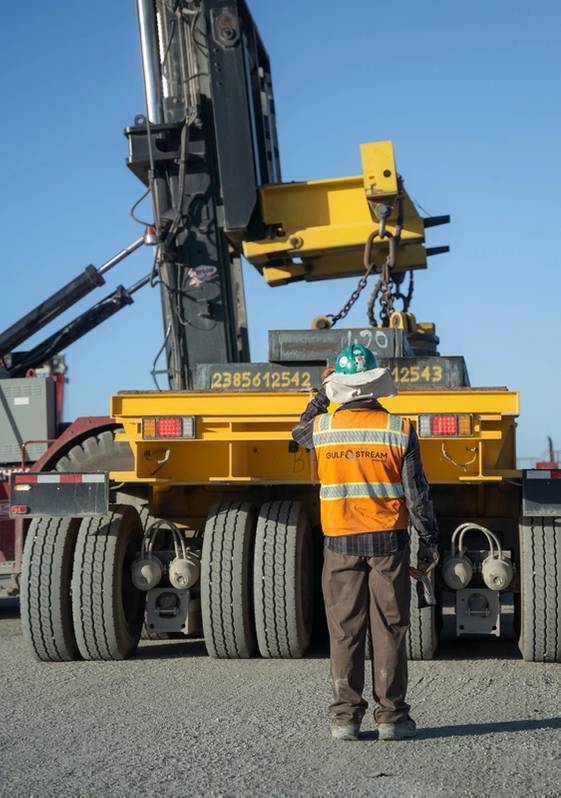The Future of U.S. Waterfront Employment: Navigating Challenges and Embracing Innovation
By Carl Bentzel, President of the National Association of Waterfront Employers
April 21, 2025
The maritime industry is a cornerstone of the global economy, facilitating over 90% of world trade and generating billions in economic activity. In the United States, waterfront employment represents a critical sector, supporting nearly 21.8 million jobs and contributing approximately $2.89 trillion to the national GDP. Despite its enormous impact, the industry faces unprecedented challenges that demand strategic action and innovative solutions to meet the demands of increased global trade in the coming years.
It is undeniable that ports, marine terminals, and stevedoring operations are the backbone of U.S. trade infrastructure. With over 200 commercial ports nationwide, the maritime sector provides direct employment to hundreds of thousands of workers in roles ranging from cargo handling and logistics to security and environmental management. Indirectly, maritime commerce fuels jobs in manufacturing, retail, and supply chain operations, further amplifying its economic significance. To truly understand the vast contributions from our ports to the American economy, think of them as a thriving ecosystem – each longshoreman, train conductor, truck driver, store manager, and everyone in between playing a crucial role in sustaining a balanced and interconnected system.
Yet, the industry is undergoing a rapid transformation. New technologies designed to improve efficiency, digitalization, and sustainability initiatives are reshaping traditional job functions. While these advancements drive efficiency and environmental responsibility, they also necessitate workforce adaptation and new training programs to ensure both employees and employers remain competitive in an evolving job market.
The maritime industry is not alone in facing workforce challenges and skill gaps. Just like many other sectors, it is grappling with workforce shortages and a renewed focus on training the next generation of longshore workers to sustain America’s maritime sector. One of the most pressing concerns in the maritime sector is the aging workforce and the difficulty in attracting new talent. The average age of dockworkers and terminal operators is rising, with fewer young professionals entering the industry. This demographic shift, combined with an increasing demand for specialized skills—such as cybersecurity expertise, data analytics, and alternative fuel technology knowledge—has created a pressing need for workforce development initiatives.
In addition to workforce challenges, regulatory and environmental requirements are reshaping how maritime businesses operate, with a heightened focus on sustainability. Ambitious environmental regulations, including the push for net-zero emissions, require the industry to invest in cleaner technologies and infrastructure. The transition to zero-emission cargo handling equipment and the integration of alternative fuels will reshape job roles, necessitating retraining programs to equip workers with the skills to operate and maintain new systems.

Beyond workforce and environmental concerns, the unpredictability of global trade adds another layer of complexity to the industry’s future. Economic uncertainty, geopolitical tensions, and supply chain disruptions have underscored the vulnerability of maritime trade. To ensure resilience, the U.S. must reinforce its domestic supply chain by investing in port infrastructure, expanding workforce training programs, and fostering innovation in cargo handling operations.
The Role of the National Association of Waterfront Employers (NAWE)
In response to these challenges, the National Association of Waterfront Employers (NAWE) is taking a leadership role in advocating for the industry’s needs and future growth.
As the leading voice of U.S. marine terminal operators and stevedores in Washington, D.C., NAWE plays a pivotal role in advocating for policies that ensure economic vitality, safety, and sustainability.
- Workforce Development Initiatives: NAWE collaborates with industry stakeholders, educational institutions, and policymakers to create and promote targeted training programs and webinars that equip workers with the necessary skills to navigate the industry’s evolving landscape.
- Sustainability Leadership: NAWE actively supports the integration of clean energy technologies at ports, advocating for legislation in Congress that would make it easier for marine terminal operators to investment in zero-emission cargo handling equipment and infrastructure.
- Regulatory Engagement: The association represents the interests of waterfront employers in discussions with lawmakers and regulators in Washington, ensuring that regulations support industry growth while maintaining safety and environmental responsibility.
- Innovation and Technology Adoption: By championing advancements in new technologies and cybersecurity, NAWE fosters efficiency while safeguarding the workforce through reskilling programs.
To ensure a thriving maritime workforce, stakeholders must work together to implement sustainable solutions that promote resilience and innovation. The maritime industry is at a crossroads, but with continued investment in workforce development, infrastructure, and technology, the U.S. waterfront employment sector can thrive in the face of global challenges. NAWE remains committed to ensuring that marine terminal operators and stevedores have the resources, support, and advocacy necessary to drive progress.

As the industry navigates this period, collaboration among government agencies, private enterprises, and workforce training organizations will be key. The future of waterfront employment depends on a proactive approach that balances economic growth, sustainability, and workforce resilience.
About the Author: Carl Bentzel served as a Federal Maritime Commissioner beginning in 2019 and in December of 2024 became President of the National Association of Waterfront Employers, a D.C.-based trade association representing marine terminal operators and stevedores in the nation’s capital.

